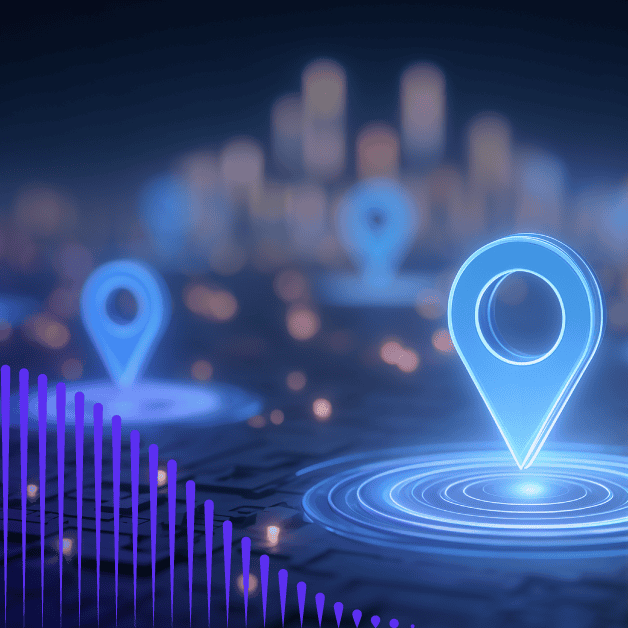Marketing is all about location, location, location.
So, why not use your consumers’ locations to your advantage?
With the power of mobile devices, location data has become more accessible than ever. With this information, you can ensure your marketing reaches consumers when they’re in the right place at the right time.
Let’s explore the many ways you can leverage location-based marketing in your channel partner ecosystem.
What is location-based marketing?
Location-based marketing is the process of targeting customers using their geographical data. By pinpointing consumers’ physical locations, you can better craft your content to be most relevant to your audience.
For example, let’s say an individual is within a mile of a Verizon store. Due to their close proximity to the store, they receive a text message promoting Verizon’s latest deal. That’s location marketing at its finest.

Is location data marketing an invasion of privacy?
Okay, we know what you’re thinking — this strategy is all about using people’s personal information… Doesn’t that create privacy concerns? Glad you asked.
In order to collect consumers’ location data, they have to give permission for you to use this information by opting in to receive text messages, emails, etc. Then, all user data is anonymized so it cannot be traced back to a specific person. So, don’t worry — this tactic is widely used and doesn’t create privacy risks for your business.
Who should use location marketing?
Any brand or business with a physical store location can use location-based targeting to their advantage. This includes a wide range of establishments, such as:
- Retailers
- Restaurants
- Grocery stores
- Franchises
- Auto parts stores
- Equipment dealers
And the list goes on.
You can use this tactic to promote anything from events to new products to limited-time offers.
Benefits of location-based advertising
Location data marketing is a great tactic to implement into your local marketing strategy. Some of the many advantages of using this technique include:
- Improving relevancy: Because location-based ads use consumers’ geographic information, they can deliver locally relevant content.
- Boosting conversions: Location-based marketing reaches customers when they’re in the right place at the right time, leading to more conversions.
- Driving foot traffic: By catching consumers while they’re in the vicinity of your affiliates, this strategy encourages more people to visit their stores while they’re in the area.
- Increasing sales: Because location-based targeting gets customers in the door, this tactic increases the likelihood of sales.
- Understanding behaviors: You can use the insights you collect from your location-based marketing to better inform future campaigns.
Types of location-based marketing
There are numerous ways you can leverage local data in your marketing. Here are some of the main location-based tactics you can implement into your next local campaign.
1. Geotargeting
Geotargeting collects consumers’ IP addresses from their mobile devices and uses this information to determine their location and learn about their behaviors and interests. With this data, you can send potential customers geographically relevant ads tailored to their location and interests.
For example, say a local cafe just came out with a new superfood smoothie. To promote it, they might specifically target consumers in the area who are interested in health foods or dieting.
2. Geofencing
Geofencing establishes virtual boundaries around a specific area using GPS technology and serves ads to all consumers who enter that radius. So, if you create a geofence around one of your affiliates’ stores and a customer is within range, they’ll receive a text message from your brand in real time.
3. Geo-conquesting
Want to play dirty without breaking the rules? Geo-conquesting is the tactic for you. Instead of setting a geofence around your store, you create one for your competitors’ locations. Then, when a customer enters the perimeter, they’ll receive ads encouraging them to go to your location instead (diabolical).
4. Dynamic landing pages
Dynamic landing pages are web pages that create a customized experience based on consumers’ locations. When someone clicks on one of these landing pages, their location data is automatically retrieved and used to influence the dynamic elements of the page, such as copy, headlines, CTAs, and images. As a result, the user will get a unique experience based on their geographic location.
5. Beaconing
Beacons are pieces of technology that draw location data from mobile devices via Wi-Fi or Bluetooth. Similar to geofencing, these beacons are triggered when an individual steps within range of them. Then, the server automatically sends marketing content to that person’s mobile device.
The beauty of beaconing is that you can get really granular with it. Say you sell construction equipment through a local equipment dealer. Instead of installing beacons around the entire store, you could put them near the excavators. Then, if a customer walks through that section, they’ll receive an ad promoting your latest excavator model.
Location-based advertising tips
With location-based ads, the marketing possibilities are endless. To get you started, here are a few things to keep in mind when tackling this strategy:
- Send offers and discounts: Using location marketing to send personalized offers, discounts, or coupons is a great way to drive more sales.
- Promote local events: Got a big event coming up? Location-based advertising is ideal for targeting individuals in your local area (aka, the people who are most likely to show up).
- Use unique images: Customizing your messaging is great — but you can go a step further. Create unique, geographically relevant images for each location you target to take your marketing to another level.
- Leverage the weather: Changes in weather offer an optimal marketing opportunity. For example, say you own a chain of auto parts stores and want to target consumers in Buffalo. Because Buffalo gets a lot of snow in the winter, you could launch an ad promoting a sale for snow tires in December.
- Get mobile-friendly: Most location-based marketing will reach consumers on their mobile devices. That’s why it’s crucial that your content is mobile-friendly.
Boost audience engagement with location marketing
Ready to start driving more sales with location-based targeting? Ansira’s marketing experts are in your corner. Ansira fuels growth for 300 brands and 1.6 million users, so you can trust we have the expertise needed to amplify your local markets.
Get in touch with one of our experts to start running location-based ads across your entire affiliate network.




